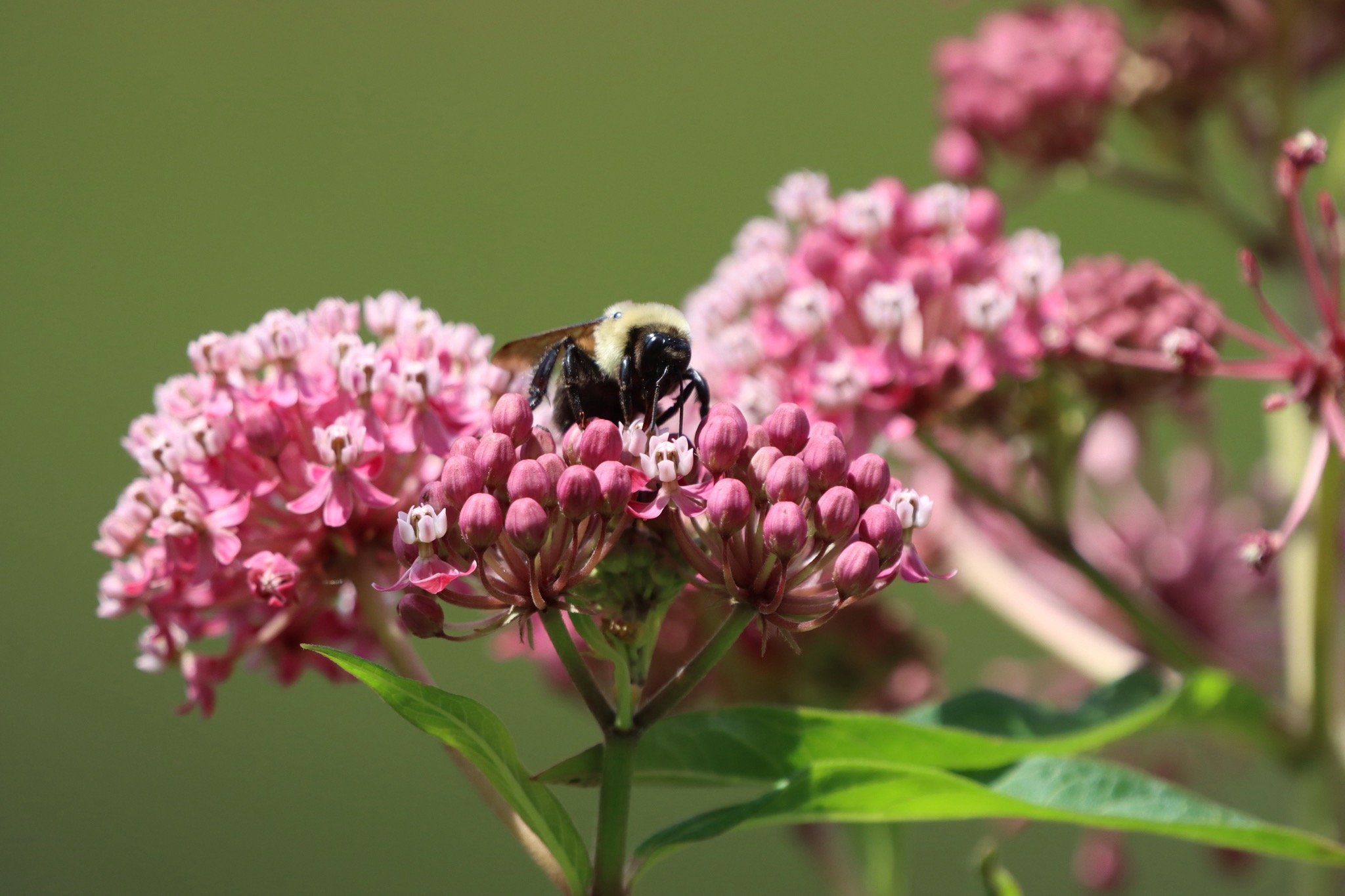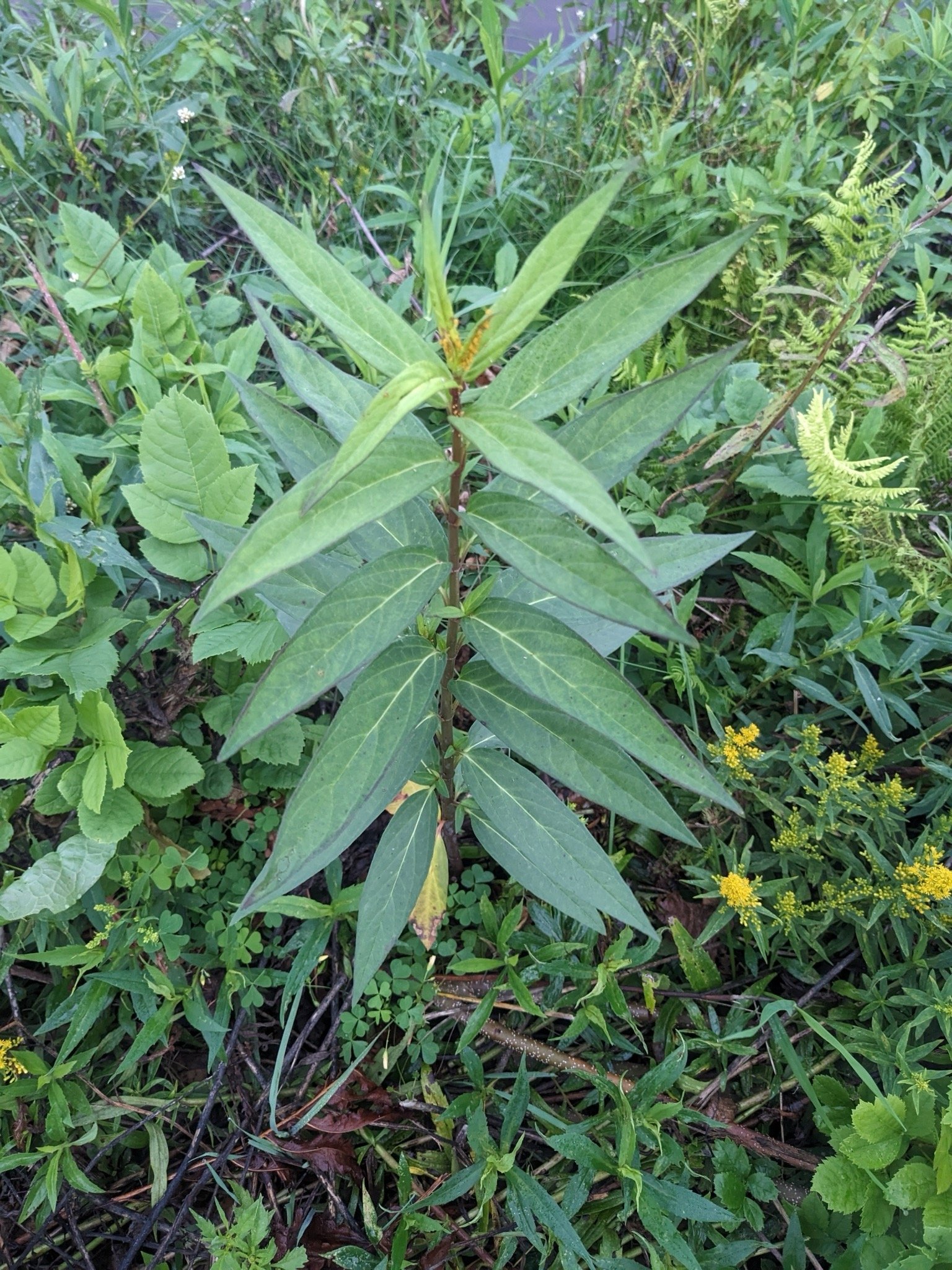HEIGHT: 3’ - 4'
BLOOM TIME: Jun-Aug
SOIL MOISTURE: medium to wet
SUN EXPOSURE: full, partial
NOTES: Rose-pink blooms emit a vanilla fragrance. Larval host to Monarch and Swallowtail caterpillars and its nectar attracts bees, butterflies, and hummingbirds. Tolerant of heavy clay. Found in river bottomlands and wet meadows. Thick, stout stem and upright growth habit. Has a complex flower structure and a close inspection will likely find many tiny insects. Don’t fret if the stems are covered in Oleander Aphids…many of our native insects are their natural predators and they will show up a few weeks later. Flowers die back in September and are superseded by horn-shaped green seedpods which dry out and split apart in October. Silky hairs allow the seeds to be wind-dispersed.
HEIGHT: 3’ - 4'
BLOOM TIME: Jun-Aug
SOIL MOISTURE: medium to wet
SUN EXPOSURE: full, partial
NOTES: Rose-pink blooms emit a vanilla fragrance. Larval host to Monarch and Swallowtail caterpillars and its nectar attracts bees, butterflies, and hummingbirds. Tolerant of heavy clay. Found in river bottomlands and wet meadows. Thick, stout stem and upright growth habit. Has a complex flower structure and a close inspection will likely find many tiny insects. Don’t fret if the stems are covered in Oleander Aphids…many of our native insects are their natural predators and they will show up a few weeks later. Flowers die back in September and are superseded by horn-shaped green seedpods which dry out and split apart in October. Silky hairs allow the seeds to be wind-dispersed.






